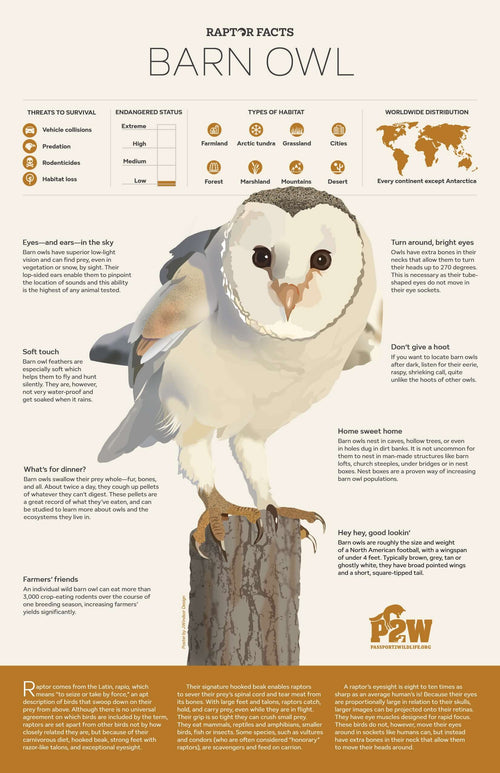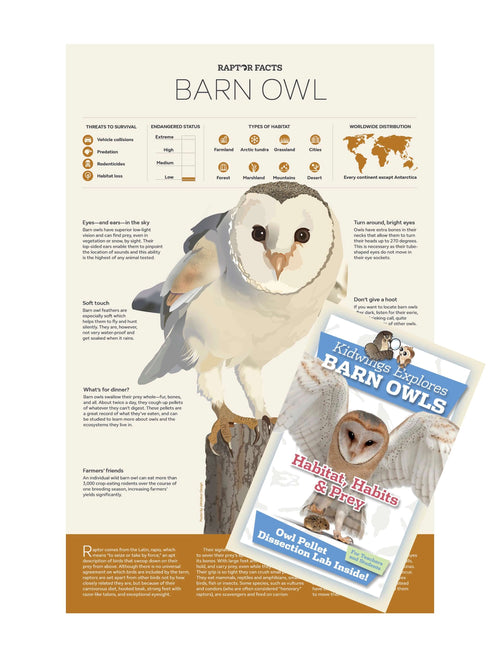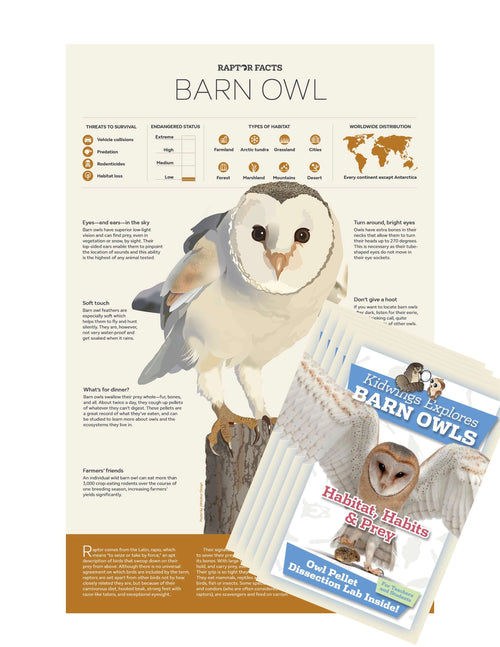No Products in the Cart
Harvest Hunters: What Barn Owls Eat in Fall

The Silent Harvest
As golden fields turn to stubble and the air cools with the scent of hay, a quieter kind of harvest unfolds. Barn Owls — ghostly silhouettes of dusk — emerge from rafters and tree hollows to reap what humans have sown.
While farmers gather crops, Barn Owls gather mice, voles, and gophers. Their work is invisible but invaluable: a single family of owls can consume over 3,000 rodents in one season. These predators are not pests; they are the custodians of the fields, keeping ecosystems balanced long after tractors rest.
But the fall harvest is changing. Irrigation, pesticide use, and modern farming practices reshape what these owls can find and how they hunt. The story of their diet is also the story of our relationship with the land.
“A single Barn Owl can eat over 3,000 rodents in one season — nature’s quiet pest control.”
The Landscape of Fall
Across farmlands and pastures, the post-harvest landscape becomes a living buffet. Mice and voles feed on leftover grain, hiding in hay bales and beneath irrigation lines. The soundscape of the night hums with their movement — and the Barn Owl listens.
These birds thrive where agriculture meets wilderness. Open fields, canal edges, and orchard margins offer both visibility and prey density. But when humans alter these spaces, the ripple effect reaches even the silent hunters.
- Over-irrigation floods rodent burrows, reducing prey.
- Rodenticides poison not only mice but also the owls that eat them.
- Monoculture farming reduces biodiversity, starving entire food webs.
Yet there’s hope in every field left wild around the edges. A single hedgerow, an uncut patch of grass, or a chemical-free field can support thriving rodent populations — and in turn, thriving owls.
Sustainable farming doesn’t just protect soil; it keeps the sky alive.
Hunters of the Quiet Season
Unlike other raptors that rely on vision, Barn Owls hunt primarily with sound. Their faces — heart-shaped radar dishes — funnel noise directly to asymmetrical ears, allowing them to locate prey under layers of soil, snow, or straw.
They don’t see the mouse; they hear its heartbeat.
Each flight is an act of precision. Their broad, soft wings cut through the air without a whisper — the product of millions of years of evolution in stealth. The first beat of their wings might be the last sound a vole ever hears.
Fall’s cooler nights make sound travel farther and prey more active, which means it’s hunting season at its quietest and most efficient. Owls hunt from dusk to dawn, storing body fat before the winter chill. In these months, every meal counts.
And in every meal, there’s balance — life feeding life, sustaining the cycles that make ecosystems resilient.
The Human Connection
We rarely see Barn Owls, but they see the results of our choices. When we use chemicals to control rodents, we poison our pest control allies. When we plow every inch of land, we erase their nesting grounds.
But the reverse is also true. When we leave wild margins, use fewer pesticides, and protect irrigation corridors, Barn Owls flourish. Their return is a reward — a sign that an ecosystem is working.
Farmers who install owl nest boxes often notice not just fewer rodents, but fewer chemicals needed overall. The partnership between agriculture and raptors is ancient — one of mutual benefit, not conflict.
Fun Fact
Barn Owls don’t hoot! Their calls are long, raspy hisses — the sound of wind over old wood. These cries earned them nicknames like “Ghost Owl” and “Hobgoblin Owl” in folklore.
Classroom Connection: “The Harvest Food Web”
Encourage students to build a “Food Web of Thanks.” Start with the grain crops planted in spring. Add rodents that feed on leftover seeds. Then, connect Barn Owls as the natural pest control layer that protects future harvests.
To extend the lesson:
- Dissect sterilized OBDK Owl Pellets to identify prey species.
- Compare diets from different regions or seasons.
- Discuss how human activity — irrigation, pest control, habitat changes — impacts biodiversity.
This simple web becomes a map of gratitude: every species feeding another, sustaining life through the fall.
Product Spotlight: Raptor Facts: Barn Owl Poster
Designed for visual learning, this OBDK classroom poster showcases Barn Owl anatomy, sensory adaptations, and food chains. Pair it with Owl Pellets Kits to turn biology into a full-circle exploration of predator-prey relationships.
It’s perfect for grades 3–8, combining art, science, and storytelling — the hallmarks of OBDK education.
Teacher Takeaway
Barn Owls are reflections of the land beneath them. Their diets reveal the unseen — how we treat soil, water, and balance. Teaching about their fall habits is teaching about sustainability, gratitude, and coexistence.
Invite your students to look beyond the harvest — to see the invisible partnership between farmers, predators, and ecosystems that keeps the world turning.




